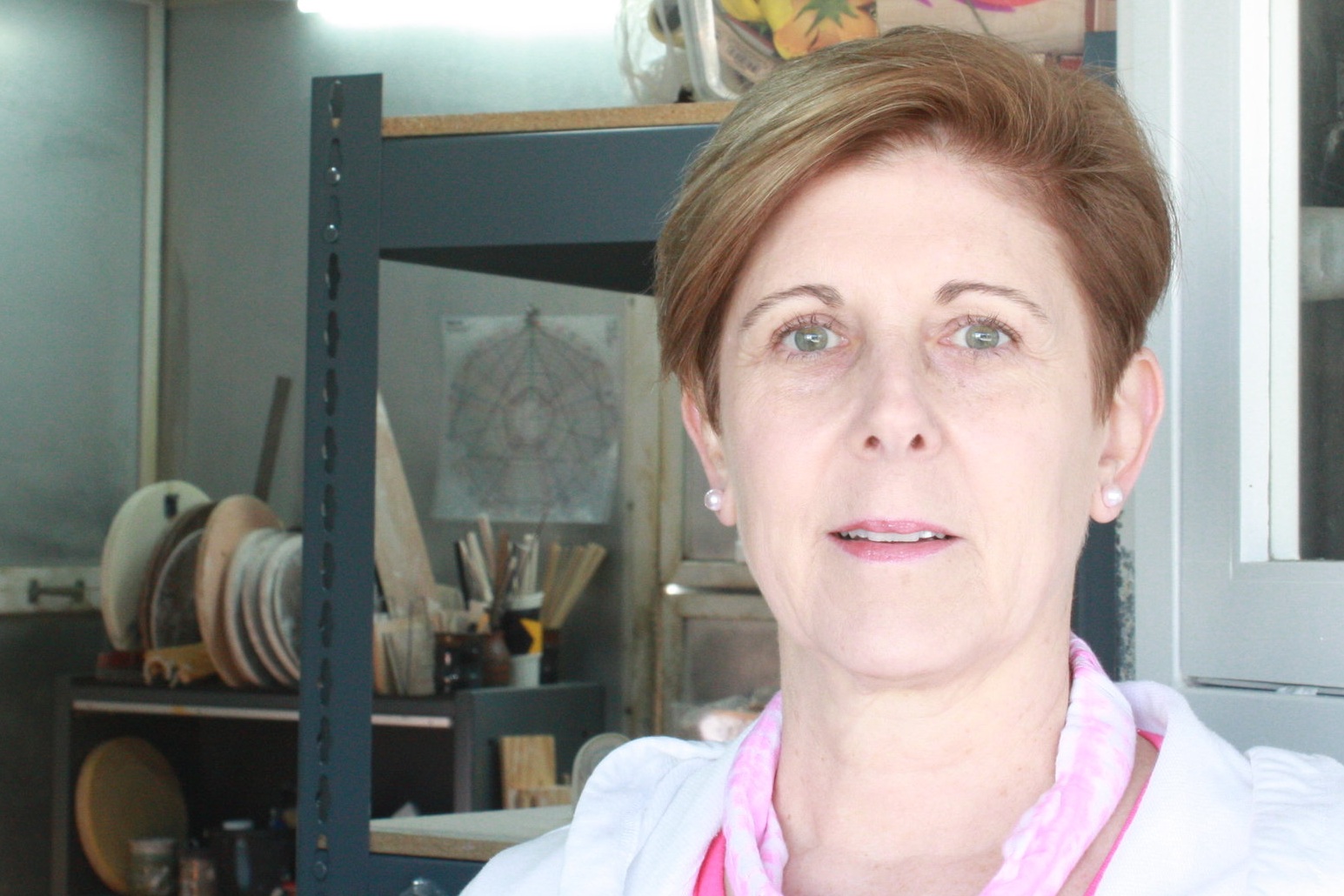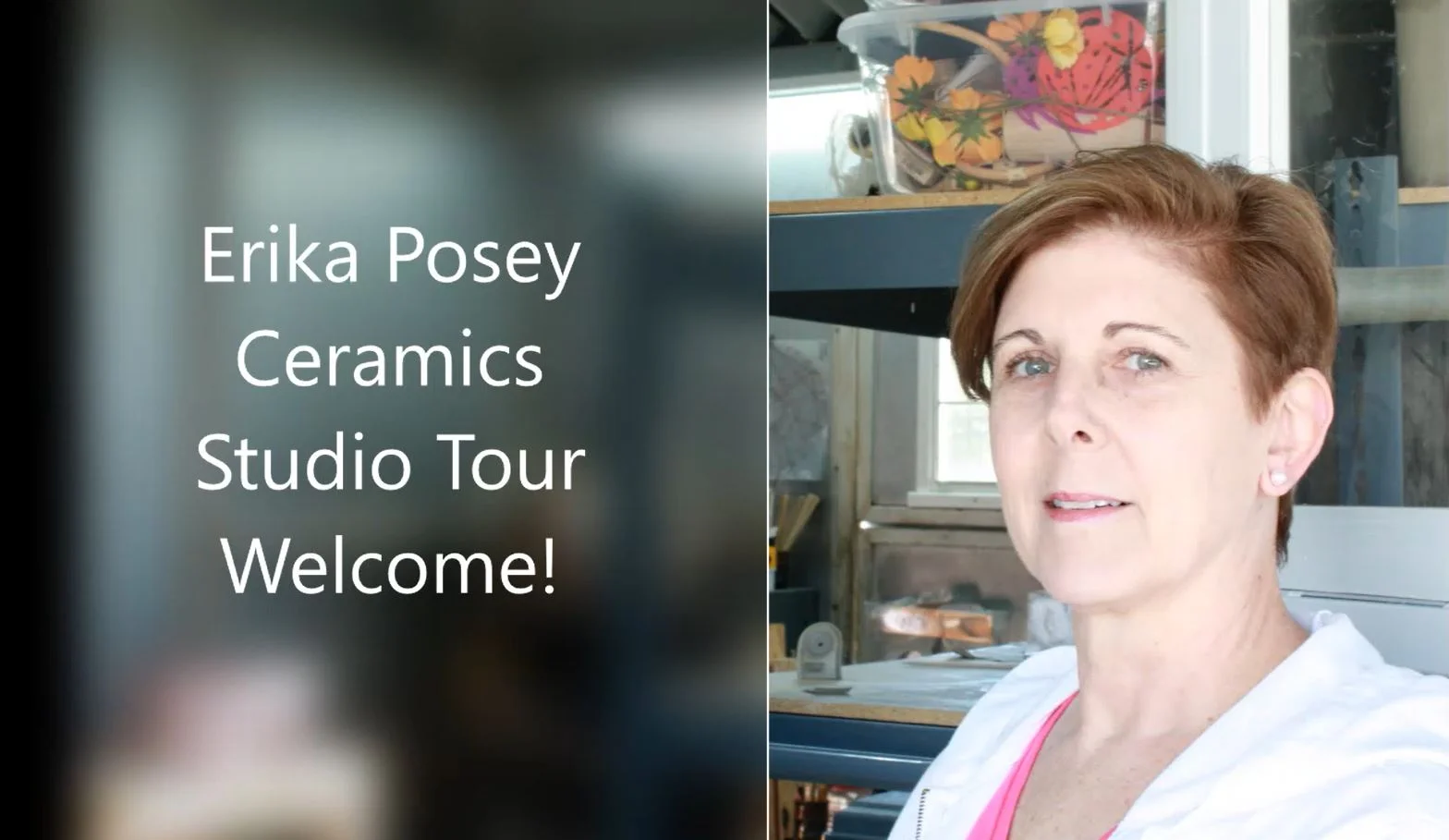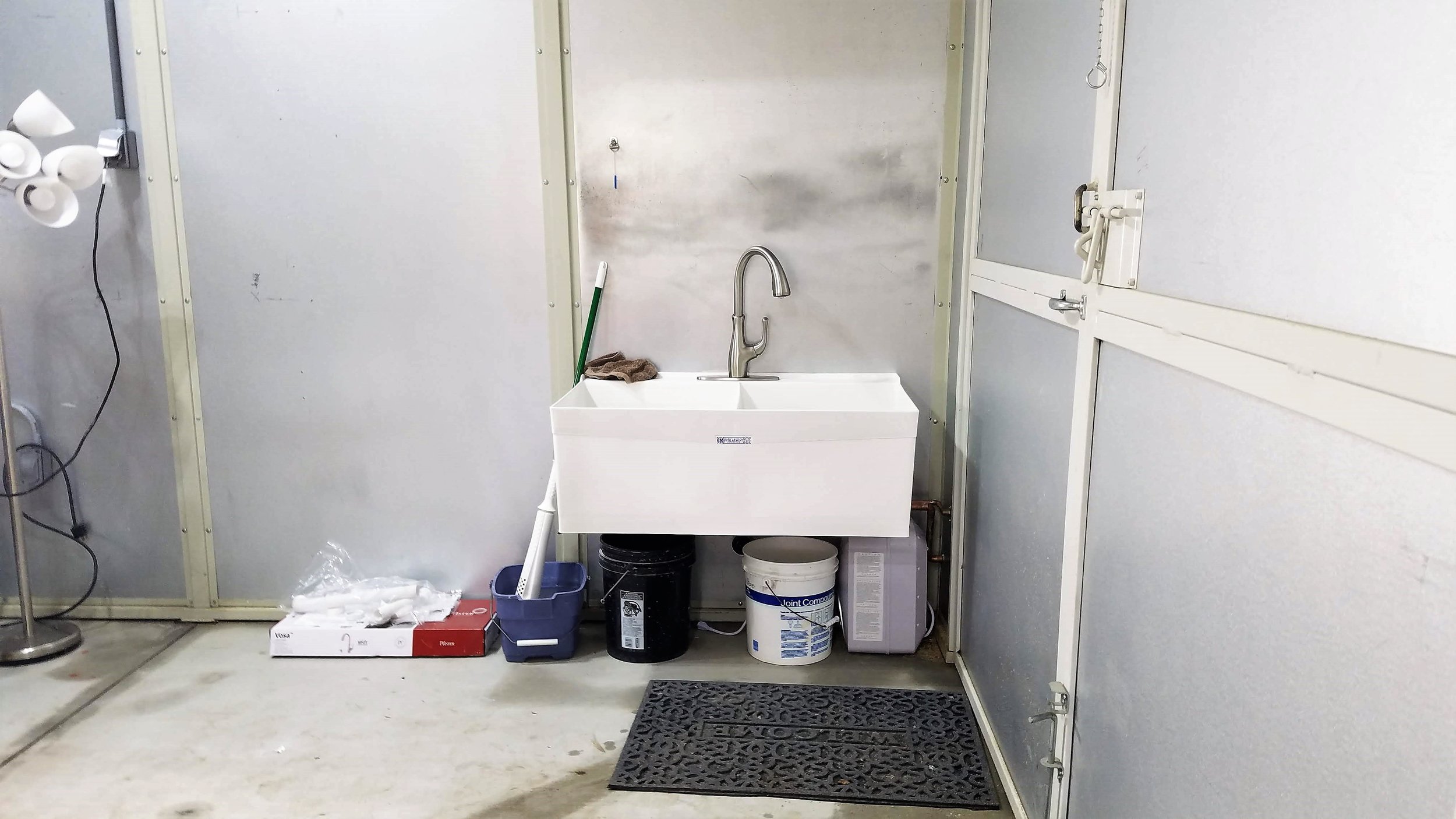Studio Tour
Since the last Blog post in January, Alan has worked very hard to get the Simi studio fully functional and virtually completed. See the Studio Tour slide show below to view some of the recent accomplishments including:
Utility basins connected to sewer by plumber – awesome!
Assembled heavy duty storage shelves on wheels, sealed wood shelves, and moved into them
Sealed leaking doors to reduce rain water migration
Horse schmutz removed from walls/doors – well mostly, a bit more to go when it gets warmer
Outdoor rinse/clay recycling station built and installed.
One of the great features of the new studio are all the doors. When all are open, it feels like an outdoor studio. And doors can be opened or closed in different configurations to change the airflow and view. My favorite door is the Dutch door in front of the wheel (left) which provides an inspiring sky view. The glaze room doors offer a great view too even at night as the moon rises.
Another feature: almost everything is on wheels to make daily mopping easier, periodic deep cleaning less daunting, and reconfiguring the workspace a breeze…storage shelves, glaze carts, file cabinet storing glaze chemicals, desk, chairs. And I keep some mini-dollies on hand to move the potter’s wheel, wedging table, and kilns, so with some help these can be rolled as well. Folding work tables are multifunctional and easy to move. As you can see, as I get older my body reminds me to find ways to make life easier.
I recently visited the Beatrice Wood Center for the Arts and toured her modest home and studio in Ojai, California. What an amazing woman and character! She too discovered clay in high school (Hollywood High) but Wood’s introduction was via an Adult Education Class in 1933 (age 40), unlike me in my junior year. Her clay career peaked when she was in her 80’s and 90’s. Clay must have developed into her ultimate passion. She lived 105 years (died 1998) and continued to throw pots into her 104th year. The last pots she threw are still on her wheel, unfired. It feels like she will be back any minute to finish them. I am not sure I want to live to 100. And I am quite sure I will never be more than a curious student of clay. But Wood’s legacy inspires me to keep at it a bit longer.
Enjoy the Studio Tour!
I would love to hear your studio suggestions and feedback!
Studio Update
My favorite contractor has the studio coming along nicely. Some “before” pictures are included in my November 7, 2018 blog post titled Temporary Studio.
Completed:
Electrical service upgraded – kiln is live
Glaze/Kiln Room
Firing in progress
New concrete floor in the Clay Room- virtually eliminates the horse aromas which were endearing but became less so over time
Enclosed eaves – keeps out the birds
Wall between Glaze/Kiln Room and Clay Room removed, and new support installed – better sight lines
My favorite welder
My favorite painter
Electrical outlet and lighting installed – improves safety and convenience
Two windows installed in Clay Room Dutch doors – natural light is wonderful
Clay Room Dutch door #1 open
Clay Room Dutch door #2
Double basin utility sink with HOT water installed in Glaze/Kiln Room– using buckets underneath temporarily
Hot water!
To do:
Sewer connection for utility sink
Assemble heavy duty storage shelves on wheels and get organized
Seal doors to reduce rain water migration that occurs primarily in January
The best part of this project is being able to find ways to create during the construction. Stay tuned for the final reveal!
CASI Raku Workshops
Raku: adults playing with fire. It is very fast paced, a bit unpredictable, and always exciting. Over the years I have participated in a few Raku workshops. the Most recent were in Newhall, California at Ceramic Artist Studio, Inc. (CASI).
Raku is an ancient process of creating ware traditionally used for Japanese tea ceremonies. However by today’s standards Raku ware is not food safe or water tight. It can be used for plants or flowers only if the pot has a plastic or glass insert.
One of the current Western raku processes starts with low fired (bisqued) clay pots or objects that are painted with special glazes designed to change colors during the cooling process. After the wet glaze is dry, the pieces are heated to about 1750F.
When the glaze is melted on the pots, the kiln is opened. using fire resistant gloves and long tongs, each pot is quickly removed from the kiln, placed in a small metal can with newspaper, and sealed tightly with a metal lid.
As the hot pot is placed in the can, the paper ignites, and when the lid is secured the combustion reduces the oxygen around the pot. This change in atmosphere creates a wide variety of colors and lusters in the glaze. The amount of time the piece is left in the can with the lid closed also impacts the results. When removed from the can, the piece either cools naturally in the air or is quenched in a container of water (no picture, sorry). The cooling process also impacts the final colors.
Here are a few of the classes’ beautiful raku pieces. Please see my Gallery’s Raku page to enjoy my work.
Temporary Studio
Temporary Studio
Over the summer Alan and I relocated from Maryland to Simi Valley, California. We love being closer to our only daughter and enjoy the wonderful predictable weather. The most challenging aspect of our physical move has been moving our equipment and setting up our workspaces. Alan’s wood shop is coming together nicely in the three car garage. At the same time, he is building out my clay studio.
We are converting part of a metal prefabricated horse barn into a glaze/kiln room, a clay room, and a office/storage room. The existing finished storage space was easily converted into the office/storage room. The former tackroom will be a dedicated glaze/kiln room and is serving as my temporary studio. It has the appropriate electrical service, but no water yet. A hose and rinse buckets are working just fine for now. As I am typing, the contractors are pouring a concrete floor in one of the former feedstalls for the clay room, and the other feedstall for general storage. Moving furniture and equipment around the temporary studio to get to things is proving a bit cumbersome. Having more floor space will be much more efficient. Here are a few more studio pictures.
Temporary Wheel Station
Slab Roller and Storage
Office, Storage, and Photo Booth
Future Clay Room
Future Clay Room (view 2)



























